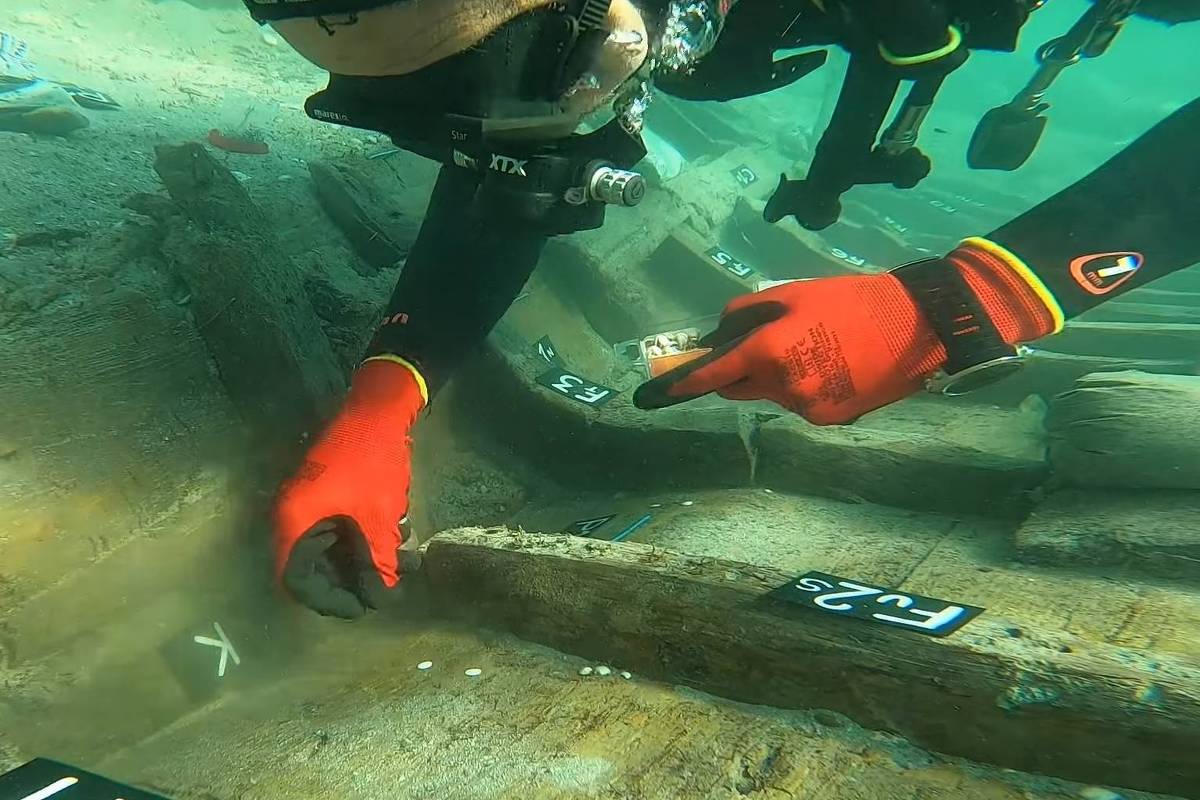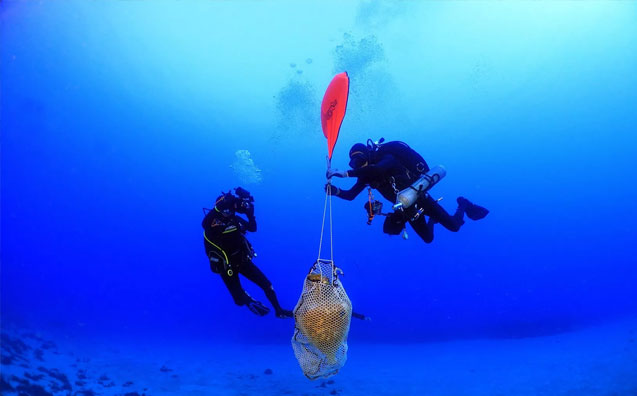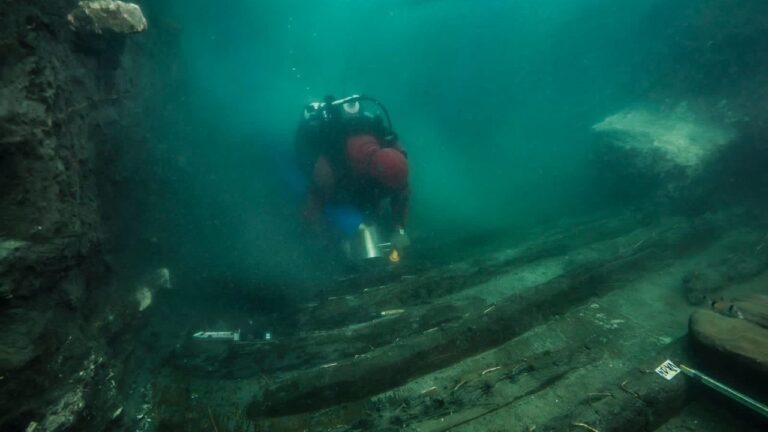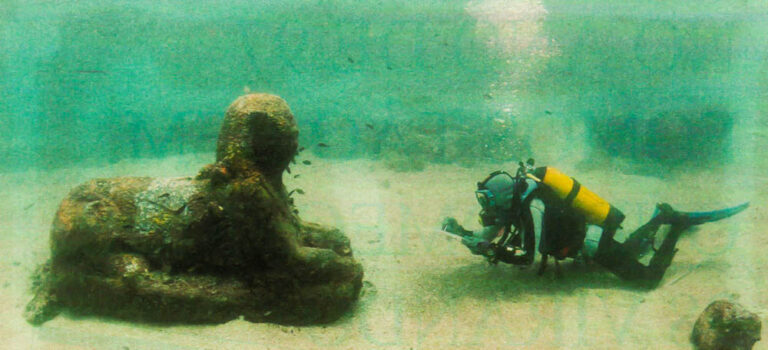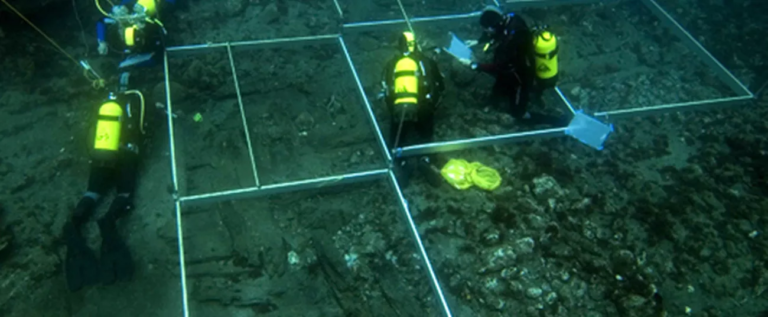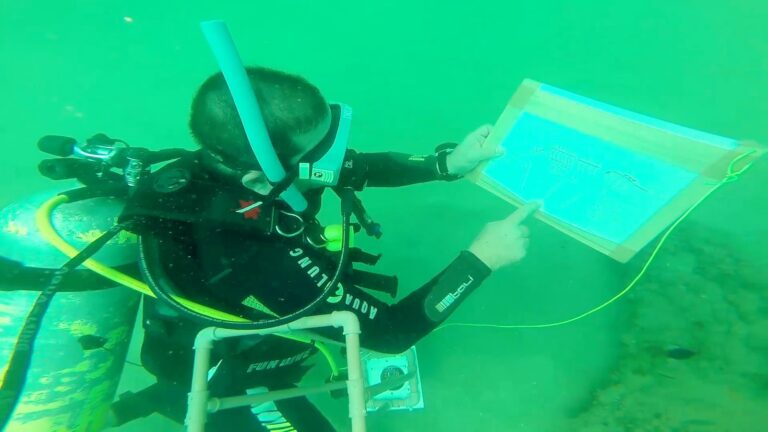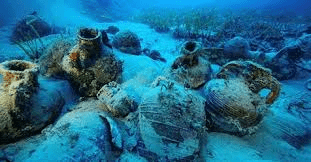Underwater Dating Techniques: Revealing Ancient Ages
Dating techniques play a crucial role in unraveling the mysteries of ancient civilizations. By accurately determining the ages of artifacts and archaeological sites, researchers can gain valuable insights into the history, culture, and development of these ancient societies. One particularly intriguing aspect of archaeological research is the study of underwater sites, which have become increasingly significant in recent years. These submerged archaeological sites hold a treasure trove of ancient artifacts, often preserved in remarkable condition due to the protective environment of water.
Underwater archaeological sites are incredibly valuable in preserving ancient artifacts that may have been lost or destroyed on land. The submerged conditions prevent the rapid decay and degradation of delicate materials, such as wood or organic matter, providing researchers with a unique opportunity to uncover artifacts that would otherwise be lost to time. The preservation of these artifacts allows for a more comprehensive understanding of ancient civilizations and their ways of life.
Now, let’s delve into the concept of underwater dating techniques. This specialized field of study applies various scientific methods to determine the age of artifacts and archaeological remains found beneath the water’s surface. These techniques have been developed to overcome the unique challenges posed by underwater environments, such as the lack of traditional dating materials or the presence of contamination. By accurately dating underwater artifacts, researchers can establish timelines and chronologies, allowing for a more accurate understanding of the development and interaction of ancient civilizations.
In the following sections, we will explore several underwater dating techniques that have proven invaluable in revealing ancient ages. We will discuss the principles behind each method, their applications in underwater contexts, and the advantages and limitations they present. From radiocarbon dating to dendrochronology, from optically stimulated luminescence (OSL) dating to thermoluminescence (TL) dating, we will cover a wide range of techniques used to unlock the secrets hidden beneath the waves.
Join us on this fascinating journey as we dive into the depths of underwater dating techniques and explore the ancient ages they reveal.
Table of Contents
Radiocarbon Dating
Radiocarbon dating is a widely used technique in archaeology for determining the age of ancient artifacts. It is based on the principle that carbon-14, an isotope of carbon, is present in the atmosphere and is absorbed by living organisms. When an organism dies, it no longer absorbs carbon-14, and the isotope begins to decay at a known rate. By measuring the remaining amount of carbon-14 in a sample, scientists can estimate its age.
In underwater archaeology, radiocarbon dating plays a crucial role in uncovering the mysteries of ancient civilizations. By dating artifacts found in submerged sites, researchers can gain valuable insights into human history and the development of ancient societies. However, dating underwater artifacts using radiocarbon dating presents unique challenges.
One of the main limitations of radiocarbon dating in underwater contexts is the potential for contamination from marine materials, such as shell fragments, that may have different carbon-14 levels than the artifact being dated. This contamination can result in inaccurate dating. Additionally, the preservation of organic material in underwater environments can be variable, making it difficult to find suitable samples for dating.
Despite these challenges, there have been several successful radiocarbon dating studies conducted on underwater archaeological sites. For example, the dating of submerged wood from ancient shipwrecks has provided valuable information about maritime trade and navigation in the past. The accuracy of radiocarbon dating in these cases is often enhanced by combining it with other dating techniques, such as dendrochronology or Bayesian modeling.
In conclusion, radiocarbon dating is an important tool for dating underwater artifacts and revealing ancient ages. Though it presents challenges, the successful application of this technique in underwater archaeology has greatly enhanced our understanding of ancient civilizations. By overcoming these limitations and continuing to refine dating techniques, researchers can further unravel the mysteries of the deep sea and shed light on the complex history of human interaction with water.
Dendrochronology: Unlocking Ancient Secrets
Dendrochronology, a powerful dating technique, holds the key to unlocking ancient ages hidden beneath the depths. By analyzing tree-ring patterns, dendrochronology allows us to establish precise dates for events in the past. This technique is not limited to land-based archaeology; it can also be applied to underwater archaeological remains, shedding light on the mysteries of submerged civilizations.
At its core, dendrochronology relies on the principle that tree rings form distinct patterns year after year. These patterns can be matched across different samples, creating a chronological sequence that stretches back centuries or even millennia. Dendrochronology, when applied to underwater archaeological remains, enables researchers to determine the age of submerged artifacts with remarkable precision.
The potential insights gained from underwater dendrochronological studies are invaluable. By examining the tree-ring patterns of submerged wood, we can reconstruct past climates, track changes in sea levels, and even understand the resource management practices of ancient peoples. Through underwater dendrochronology, we can piece together a more complete picture of how ancient civilizations interacted with their environments and adapted to changing conditions.
Moreover, dendrochronology offers a unique advantage in underwater archaeology. Unlike other dating techniques that mainly focus on organic materials, dendrochronology allows us to date not only artifacts but also the submerged sediments surrounding them. By establishing a precise chronology, researchers can gain a comprehensive understanding of the site’s history and the context in which artifacts were deposited. Underwater dendrochronology provides a multi-layered perspective that enriches our understanding of ancient societies and their relationship with the aquatic world.
The application of dendrochronology underwater is a fascinating field of study that has already yielded impressive results. From deciphering the age of ancient shipwrecks to revealing the age of submerged structures, underwater dendrochronology has provided us with critical insights into our past. By diving into this technique, we dive deeper into our history, showcasing the importance of preserving and exploring underwater archaeological sites for a fuller understanding of humanity’s roots.
Optically Stimulated Luminescence (OSL) Dating
Optically Stimulated Luminescence (OSL) dating is a technique used in underwater contexts to determine the ages of submerged sediments and geological formations. This method has proven to be valuable in revealing the ancient ages of artifacts and providing valuable insights into the history of humanity.
The OSL dating technique works by measuring the amount of trapped electrons in minerals such as quartz and feldspar. These minerals absorb energy from natural radiation present in the environment, and over time, this energy becomes trapped in the electron traps of the minerals. When exposed to light, these trapped electrons are released and emit luminescence, which can be measured and used to estimate the time since the material was last exposed to sunlight.
OSL dating plays a crucial role in establishing the ages of submerged sediments and geological formations because it allows archaeologists and scientists to determine when these materials were last exposed to sunlight. This information can provide insights into the geological and environmental changes that have occurred over time, as well as the human activities that have shaped these landscapes.
One advantage of OSL dating for underwater archaeological sites is its ability to date sediments with ages ranging from a few decades to several hundreds of thousands of years. This makes it a versatile technique that can be applied to various underwater contexts. Additionally, OSL dating can be used in conjunction with other dating methods, such as radiocarbon dating, to establish more accurate chronological frameworks.
However, OSL dating also has its limitations. One challenge is the potential for the resetting of the luminescence signal, especially in fluvial or marine environments where sediment deposition and erosion can occur. This can lead to inaccurate age estimates if the luminescence signal is not completely reset by these processes. Additionally, the success of OSL dating relies on the availability of suitable sediment samples, which can be limited in underwater archaeological sites.
In conclusion, Optically Stimulated Luminescence (OSL) dating is an important technique for dating underwater archaeological remains. It helps establish the ages of submerged sediments and geological formations, providing valuable insights into ancient civilizations and their interactions with the environment. While OSL dating has its limitations, it remains a powerful tool in the field of underwater archaeology. Continued research and advancements in OSL dating techniques will further enhance our understanding of human history and the preservation of underwater archaeological sites.
Thermoluminescence (TL) Dating
Thermoluminescence (TL) dating is a valuable technique in determining the age of ancient pottery recovered from underwater sites. TL dating relies on the principle that certain minerals, like quartz and feldspar, accumulate radiation energy from their surroundings over time. When these minerals are heated, the radiation energy is released in the form of light. By measuring this emitted light, scientists can estimate the time that has elapsed since the pottery was last heated or exposed to sunlight.
TL dating is not limited to pottery alone. It can also be used for submerged geological samples, such as sediments or stones found in underwater archaeological sites. Similar to pottery, these geological samples can contain minerals that have been exposed to radiation and accumulated energy over time.
Numerous successful examples of TL dating can be found in underwater contexts. For instance, the dating of ancient ceramics recovered from shipwrecks has provided valuable insights into maritime trade routes and cultural exchange during ancient times. TL dating has also been used to establish the age of geological formations found in underwater sites, shedding light on the geological history of these submerged areas.
One notable example is the dating of a shipwreck discovered in the Mediterranean Sea. By analyzing the ceramics recovered from the site using TL dating, researchers were able to determine that the ship sank around the 4th century BC, providing important information about ancient seafaring activities and trade routes in the region.
In conclusion, TL dating is a powerful tool in determining the age of ancient artifacts and geological samples recovered from underwater sites. Its application in underwater contexts has yielded significant results, contributing to our understanding of past civilizations and the environment they inhabited. As we continue to explore and preserve underwater archaeological sites, further research and advancements in TL dating methods are crucial in unraveling the mysteries of our ancient past.
Bayesian Modeling and Chronological Frameworks
Bayesian modeling is an incredibly powerful tool that has revolutionized the field of underwater dating techniques. By integrating multiple dating techniques, it provides a more accurate and comprehensive understanding of ancient ages in underwater archaeological finds.
Bayesian modeling takes into account the uncertainties and probabilities associated with each dating method, allowing researchers to establish chronological frameworks that are based on a combination of different data points. This approach enables scientists to draw more precise conclusions about the ages of underwater artifacts and remains.
One of the major benefits of Bayesian modeling is its ability to take advantage of the strengths of each individual dating technique, while also compensating for their limitations. For example, radiocarbon dating can provide accurate results for organic samples, but it becomes less reliable as the age of the material increases. By integrating radiocarbon dating with other techniques like dendrochronology or OSL dating, Bayesian modeling can greatly enhance the accuracy and resolution of age determination.
Numerous case studies have demonstrated the success of Bayesian modeling in reconstructing ancient ages in underwater contexts. For instance, by combining radiocarbon dating with TL dating, researchers were able to accurately determine the age of ancient pottery recovered from underwater sites. This method has also been applied to submerged geological samples, providing valuable insights into the geological history of underwater archaeological sites.
Overall, Bayesian modeling has revolutionized underwater dating techniques by providing a powerful and comprehensive framework for establishing chronological ages. Its ability to integrate multiple dating methods and account for uncertainties makes it an invaluable tool in understanding ancient civilizations and their histories. As our technology and understanding continue to advance, there is great potential for further research and enhancement of underwater dating methods, opening up new avenues for exploring the depths of our past.
Conclusion
In conclusion, underwater dating techniques play a crucial role in revealing ancient ages and providing valuable insights into our human history. Throughout this blog post, we have explored various methods such as radiocarbon dating, dendrochronology, optically stimulated luminescence (OSL) dating, thermoluminescence (TL) dating, and Bayesian modeling. Each technique has its own strengths and limitations, but when combined, they create a more comprehensive and accurate chronological framework.
The significance of preserving and exploring underwater archaeological sites cannot be overstated. These sites serve as unique time capsules that preserve ancient artifacts and provide a wealth of information about past civilizations. By unraveling the mysteries hidden beneath the water’s surface, we gain a deeper understanding of our ancestors and their way of life.
However, there is still much to learn and discover in the field of underwater dating methods. As technology advances, further research and advancement are crucial in refining these techniques and exploring new approaches to dating submerged artifacts. By pushing the boundaries of underwater archaeology, we can uncover even more ancient ages and unlock the secrets of our past.
In conclusion, underwater dating techniques offer a fascinating and invaluable tool for uncovering the ancient ages that lie beneath the waves. By emphasizing the importance of preserving and exploring underwater archaeological sites, we can continue to deepen our knowledge and understanding of human history. Let us embrace the call to further research and advancement in underwater dating methods, as it holds the key to unlocking the rich tapestry of our collective past.

